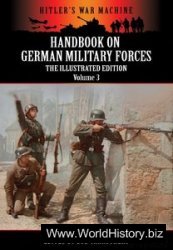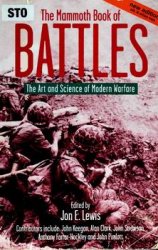With the fall of Fort Sumter, South Carolina, in April 1861, women North and South responded by supplying volunteers with blankets, clothes, and food. In villages, hamlets, cities, and towns, women packed lunches, mended shirts and socks, sewed uniforms and flags, and collected family quilts. Women equipped their relatives, friends, and townsmen with supplies to get them to the front, believing that the government would then take over the provisioning of the troops. But neither the United States nor Confederate governments had the military infrastructure with which to organize and equip a large army. As a result, at the beginning of the Civil War, individuals and local governments provided their own uniforms, weapons, food, and general equipment such as knapsacks, blankets, and tents. Even after the U. S. government had a system in place that combined federal production with private enterprise, there was plenty of room for the assistance of ladies aid societies.
In both the North and the South, women’s efforts quickly evolved into soldiers’ aid societies. The organizers had been active in benevolence work before the Civil War and transformed their groups to accommodate the soldiers, or they simply established new associations. Women wrote organization constitutions, elected officers, established dues, and created work committees to cut, sew, and pack, as well as solicit funds. Women volunteered their time and talents with the patriotic sentiment that they were doing their part for the cause. “We never knew before how much we loved our country,” wrote Josephine Shaw, the sister of Col. Robert G. Shaw of the 54th Massachusetts. A devoted volunteer, she added: “We can work though we can’t enlist. It is very pleasant to see how well the girls and women do work everywhere, sewing meetings, sanitary hospitals and all.” The societies provided the soldiers with comforts when well and with hospital supplies and nurses when wounded and sick. In the North, it is estimated that more than 20,000 ladies aid societies operated throughout the war. In the South, women established more than 1,000 societies by the end of 1861, but Confederate ladies never organized on a national scale, and they faced an array of problems that doomed the smooth and continuous operation of their associations.
First, Southern ladies aid societies remained the domain of the elite ladies. This discouraged working-class women, who held the domestic skills, from participating, thus hampering society relief efforts. Southern women turned much of their time to fund-raising when they realized that many supplies needed to be purchased. Along with the basic medical and domestic goods like bandages, scissors, and Bibles, societies in Charleston, Mobile, Norfolk, and Savannah raised money for the purchase of ships. However, the Confederacy also lacked the overall resources that were available to Northern women as goods became scarce with intensifying war activities and the successful Union naval blockade of Southern ports. Southern ladies aid societies finally collapsed when the Union troops invaded the Confederacy. Federal soldiers stole the societies’ supplies, thus ending their operations.
In contrast, Northern women established a national network of ladies aid societies that were able to support the troops for the duration of the hostilities. While the societies began at a grassroots level, it became apparent to several women, particularly in the East, that a more efficient system was needed to identify and locate misplaced boxes and to rationalize management to prevent the overlapping of efforts in one area and the lack of supplies in another area. Creating such an organized system, they thought, would help rather than hinder the army. Dr. Elizabeth Blackwell of New York was the first to recognize the need for organization and called a meeting for April 26, 1861, at the Cooper Union in New York City. She invited some of the city’s most prominent women as well as Dr. Henry Bellows, the Unitarian minister of All Souls Church. Before the meeting adjourned for the day, the ladies and men present formed the Women’s Central Association of Relief (WCAR). They proposed that they would “give organization and efficiency to the scattered efforts” already in progress, that they would establish a relationship with the medical staff of the army, and a central depot for supplies, and that they would investigate the needs of the soldiers. Blackwell also began a program to train and register female nurses. In the short term, the WCAR proved to be a success. The ladies aid societies of the Northeast responded by funneling their supplies into the office of the WCAR in New York. Other women around the area who had not yet organized were inspired to establish soldiers’ aid societies in their towns and began a relationship with the WCAR.
The achievements of the WCAR were somewhat overshadowed by the creation of the United States Sanitary Commission (USSC). Dr. Henry Bellows feared that the War Department’s announcement that they would not accept the nursing trainees was the first of many military rejections of the WCAR. Bellows proposed that a centralized, national organization separate from the WCAR was needed to combine all of the efforts of the nation’s relief associations, help the army operate the hospitals, and determine the needs of the soldiers. Bellows suggested that the new organization have government sanction but operate on private funds. On June 13, 1861, Bellows gained official authority from President Abraham Lincoln, who believed the USSC would prove to be as useful as a “fifth wheel on a coach,” but who gave his approval anyway.
In Chicago, ladies like Mary A. Livermore helped establish the Northwestern Sanitary Commission, which became the main depot for Wisconsin, Michigan, Illinois, and Iowa supplies. In Cleveland, women formed the Soldiers’ Aid Society of Northern Ohio. In Boston, they became known as the New England Women’s Aid Association and received goods from Maine, New Hampshire, Vermont, and Massachusetts. And in Pennsylvania the Ladies Aid Society of Philadelphia received goods from around the state. All of these groups became affiliates of the United States Sanitary Commission and sent their supplies through their regional USSC channels.
The USSC and their chapters expanded their work to include sanitary inspection of camps and instruction of soldiers on matters of water supply, placement of latrines, and safe cooking methods. They provided meals, housing, and transportation to soldiers on furlough and nursed those who were too sick or wounded to continue. After the Battle of Gettysburg, a grateful doctor wrote of the ussc ladies aid: “I. . . get plenty to eat and of excellent quality from the Sanitary Commission, eggs, chickens, crackers of every kind. They are doing noble work.” They helped soldiers obtain their pay and also established a messenger service that employed disabled veterans. They maintained hospital records and helped locate wounded, captured, and dead soldiers for the distraught parents and relatives. The ladies sustained these multifaceted programs through a variety of fundraising activities. The most popular form was the sanitary fair, which usually lasted about two weeks and included displays, entertainment, auctions, and restaurants. The fair was the brainchild of Mary A. Livermore and Jane C. Hoge, who held a successful Chicago fair in October 1863 in which the Northwest Commission raised more than $100,000.
In spite of these successes, the USSC never attained its goal of creating an all-inclusive national system. Other women like those who formed the Western Sanitary Commission in St. Louis and the Cooper Shop Volunteer Refreshment Saloon and the Union Volunteer Refreshment Committee, both of Philadelphia, chose to operate independent of the USSC. These groups and hundreds of smaller societies across the North contributed supplies to the ussc but maintained their independence, believing autonomous societies could better meet the needs of their local soldiers.
The ussc also vied for supplies with the United States Christian Commission (USCC). Organized by the Young Men’s Christian Associations across the North with the ideal of caring for the soldiers’ spiritual needs, the USCC quickly became the USSC’s arch rival. Independent societies and USCC actions frustrated men and women dedicated to the national goals of the USSC, who saw their agency as the symbol of Northern unity. Although there was much infighting among the benevolent communities of the North during the war, the ladies aid societies were able to supply troops and hospitals and consequently saved thousands of soldiers’ lives.
In short, ladies aid societies, whether independent or chapters of the USSC or its Southern counterparts, were in the business of aiding the soldiers with whatever means available. Northern and Southern women volunteered their services with the call for troops in 1861, helped their causes by assisting the soldiers, and in this way became patriots of the war.
See also common soldier; homeeront.
Further reading: Jeanie Attie, Patriotic Toil: Northern Women and the American Civil War (Ithaca, N. Y.: Cornell University Press, 1998); Drew Gilpin Faust, Mothers of Invention: Women of the Slaveholding South in the American Civil War (Chapel Hill: University of North Carolina Press, 1996); Judith Ann Giesberg, Civil War Sisterhood: The U. S. Sanitary Commission and Women's Politics in Transition (Boston, Mass.: Northeastern University Press, 2000); Joan Waugh, Unsentimental Reformer: The Life of Josephine Shaw Lowell (Cambridge, Mass.: Harvard University Press, 1998).
—Patricia Richard




 World History
World History









